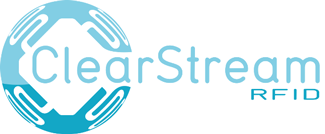English · español
RFID and BLE Beacon Technology
Whether you are tracking assets, inventory, documents, people or animals, you need technology that enables you to seamlessly capture the data you need, when you need it. Depending on factors including your budget, environment, items being tracked and workflow, there are a number of different ways that you can collect and record this data utilizing our ClearStream software.
The most widespread and accessible forms of data collection for ClearStream are UHF, HF, and LF RFID (Radio Frequency Identification). In addition to RFID, BLE (Bluetooth Low Energy) Beacons are a fast-growing alternative. While not a direct replacement for RFID, it is well suited for many of the more open or high-value environments that RFID might be suboptimal in. You can determine which one of these different data collecting technologies would be best suited for your setup by exploring their links below.
BLE Bluetooth Beacons
BLE Beacons are a newer alternative to RFID. They can be used to transmit a url, environmental data, or their location. Bluetooth enabled devices such Gateways or smartphones can receive this data. They have very long ranges over 100 feet.
UHF RFID
UHF (Ultra High Frequency) RFID is the cheapest and fastest growing RFID technology. Used for anything from retail to transportation to manufacturing. It has the longest read ranges extending beyond 50 feet.
HF RFID
HF (High Frequency) RFID is the most widely used RFID technology currently. Common applications include access control, document tracking and ticketing. It has short read ranges up to 1 foot.
LF RFID
LF (Low Frequency) RFID is a specialized RFID technology. It is used mainly for access control and animal tracking. It is low power, but with a very strong signal. It has very short read ranges up to 10 centimeters .

